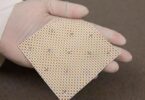[et_pb_section bb_built=”1″][et_pb_row][et_pb_column type=”4_4″][et_pb_text _builder_version=”3.13.1″]
Generally, cervical cancers originate from squamous cells.
The development of this cancer is very slow and begins as a precancerous condition called dysplasia. This pathology can be detected by means of a vaginal cytology and is totally curable.
The most common symptoms are: Abnormal vaginal bleeding, bleeding after vaginal sex, bleeding after menopause, bleeding and spotting between periods and menstrual periods that last longer or with bleeding more abundant than usual.
For the more premature stages of cervical cancer, surgery or radiation combined with chemotherapy may be used. For the more advanced stages, radiation combined with chemotherapy is usually used as the main treatment.
It is important to decide with the specialist about the treatment options, including their objectives and possible side effects. Although the choice of treatment is largely based on the stage of the disease at the time of diagnosis, there are other factors that may influence your choices, such as the characteristics and state in which the patient is at that moment. Cervical cancer can affect your sex life and your ability to have children.
On the other hand, there are clinical studies that are based on scrupulously monitored investigations that are carried out to study in greater depth new treatments or promising procedures. Clinical trials are a way to access the most advanced care for cancer. It is also the best way for specialists to discover better methods to treat cancer. Despite this, they are not convenient for all people.
A therapy based on T cells has been discovered, which achieved the remission of cervical cancer in two cases with metastases that were without the tumor recurring one year, it is effective in some women and not in others. It is an experimental process.
Women with cervical cancer with metastases have limited treatment options and the average survival with the first therapies is between approximately 13 months.
These and other innovations are now possible in Pharmamedic.
[/et_pb_text][/et_pb_column][/et_pb_row][/et_pb_section]









